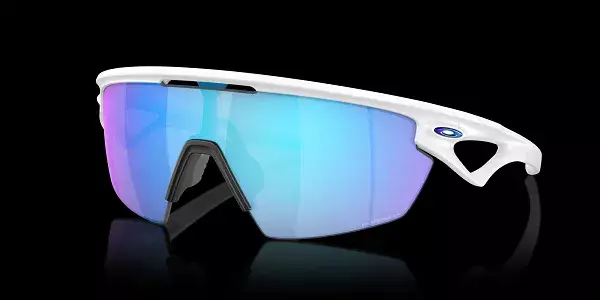Amid an evolving landscape of augmented reality (AR) and wearable tech, Meta—not one to shy away from its ambitions—plans a significant leap in the AR glasses sector in the upcoming year. Strategies gleaned from recent Bloomberg reports reveal that Meta is not merely experimenting; it is focusing on creating wearable technology that aims to cater specifically to athletes, tapping into a growing market that prioritizes data-driven performance enhancement.
The forthcoming iteration of Meta’s smart glasses is said to be designed with athletes in mind. Sport-oriented wearables have increasingly gained traction, and Meta’s choice to target this demographic appears strategic. The glasses will resemble Oakley’s “Sphaera” design, which is synonymous with sporty aesthetics and functionality. The choice of a single central camera aims to ensure these glasses are lightweight and comfortable—two crucial factors for athletes who prioritize performance over cumbersome gear.
This alignment with established brands like Oakley, owned by EssilorLuxottica—which similarly owns Ray-Ban—displays Meta’s intent to blend style with function seamlessly. By leveraging existing relationships with leading eyewear manufacturers, Meta can access popular designs that resonate well with consumers and enhance usability without compromising on their overarching goal of integrating AR technology into everyday life.
Bloomberg’s report forecasts an exciting step forward: the initial offering of smart glasses featuring a heads-up display later this year, branded as “Ray-Ban Meta.” While these glasses pave the way for digital notifications and photo displays, they won’t yet incorporate full AR capabilities. Consumers can expect a simplified app experience that may not yield the rich overlay of digital information that true AR applications promise.
Meta is ostensibly taking a cautious approach, delaying the rollout of fully AR-enabled glasses until 2027. This extended timeline could allow the company to refine production processes aimed at lowering expenses, thus facilitating a more accessible price point. The aim to produce a device priced comparably to high-end laptops or smartphones aligns with CEO Mark Zuckerberg’s vision of driving widespread adoption. In fact, Zuckerberg has been vocal about achieving economies of scale to undercut competitors, illuminating his critique of Apple’s extravagant pricing for the VisionPro, which may hinder mass-market acceptance.
Zuckerberg envisions a future where smart glasses could outstrip smartphones in terms of popularity—a bold prediction that hinges on several variables. For this vision to materialize, a profound transformation in consumer habits is essential. Users would need to adjust their reliance on traditional smartphones and gravitate towards wearables as primary devices. Such a shift is dependent on the glasses being user-friendly, desirable, and providing significant utility that smartphones currently dominate.
Moreover, there’s a reminder that current pricing for Meta’s newer models is expected to nearly double from the existing Ray-Ban Meta line, presenting a substantial investment for consumers. Meta’s long-term strategy hinges upon functionality that delivers unrivaled value—a necessary calculus for convincing a public that’s historically slow to adopt new technology, especially with a higher price tag.
In navigating this extensive AR initiative, Meta also has to contend with the broader political and economic climate. The potential for increased tariffs on Chinese imports under an incoming administration presents a risk factor that could disrupt its supply chain and ultimately inflate costs. With many components sourced from China, any abrupt regulatory shift could affect production and market strategy.
Zuckerberg’s collaboration with the government may also come with significant trade-offs. If his strategic pivot to align with political interests leads to favorable regulatory conditions, it might smooth the pathway for innovation at Meta. However, the ethical implications of selectively complying with government policies raise questions about company integrity and social responsibility. Balancing corporate ambitions with ethical practices will be crucial in the public eye.
Meta’s ambition in the AR landscape is ambitious yet fraught with challenges. The pursuit of advanced wearables for athletes signifies a meaningful investment in performance-driven technology, while the plan for incremental upgrades illustrates a measured approach toward full AR integration. However, potential pitfalls such as market resistance, economic pressures, and regulatory hurdles loom large.
In the coming years, the success of Meta’s AR glasses will depend not only on technological advancement but also on societal acceptance and adaptability. With the right mix of innovation, user engagement, and careful management of external pressures, Meta may indeed carve a niche for itself in the wearables market, possibly setting the stage for the next evolution in digital interaction.

